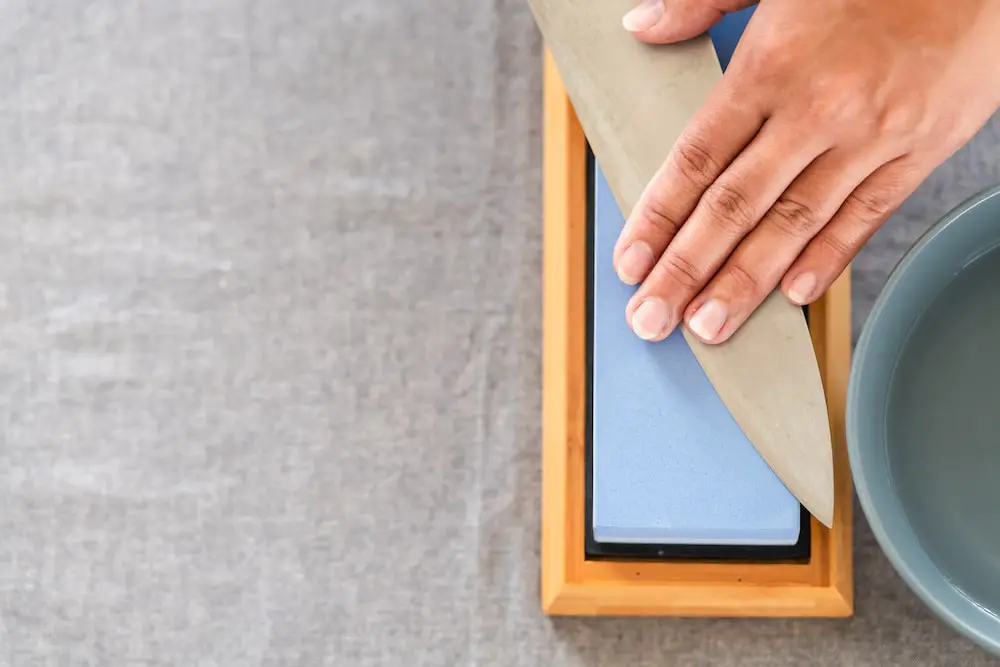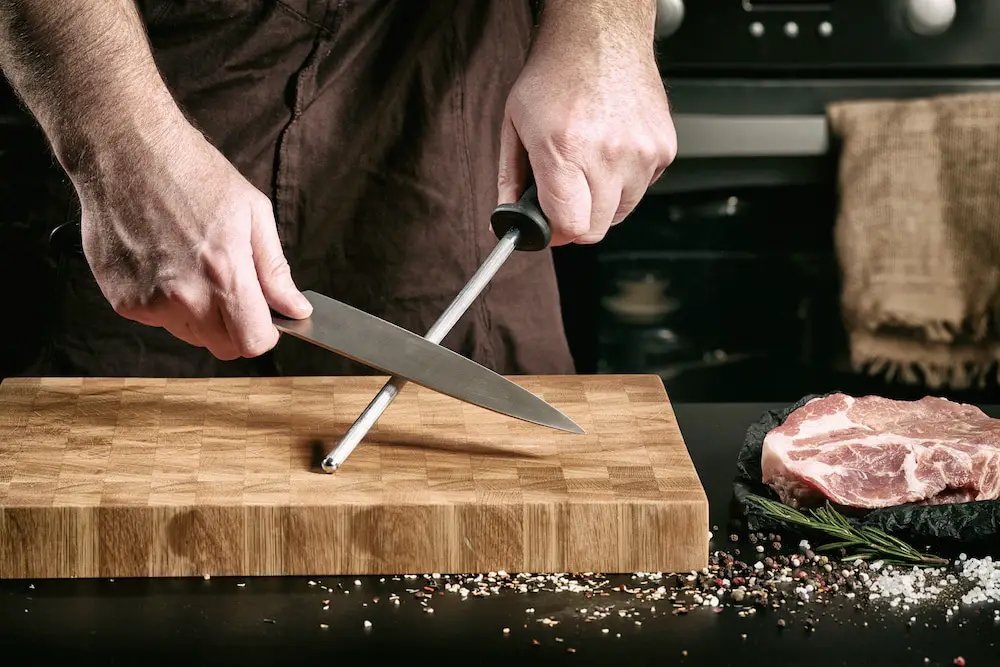There is nothing more frustrating than using a dull knife, whether camping or preparing a meal in your kitchen.
Constant cutting and slicing of different ingredients can dull the knife blade; hence, the need to sharpen it.
The question now is, can you over sharpen a knife? Some say yes, while others claim otherwise.
So, what is the real deal? Let’s clear the confusion about this query and learn about knife sharpening and more.
Can You Over Sharpen a Knife?
No amount of care and maintenance can prevent your knives from getting dull.
Regular honing may help realign the edge, but sometimes sharpening the blade is the only way to make it functional again.
Every time you try to sharpen a knife, you slowly remove some of the blade material, eventually shortening its life.
Sharpening it the wrong way or using the incorrect tool may cause you to remove more blade material than necessary.
What Is the Difference Between Knife Honing and Sharpening?
Honing and sharpening have the same goal: to keep the blades sharp and be functional.
However, they are two different processes and should not be interchanged.
Knives get dull when the blade edges are not aligned or worn down.
Therefore, a worn-down knife lacks teeth and requires sharpening, while a misaligned blade edge needs honing.
Let’s take a closer look at these two methods to understand them better.
What Is Honing?
Honing is how you maintain the blade’s edge.
The sharpness is still there, but the blade’s edge is not aligned correctly, causing it not to function correctly.
The burr, or the blade’s edge, is thin and pliable, causing it to fold over through everyday use.
Though the blade’s edge is sharp and present, a certain angle might bend and prevent it from functioning.
You will need honing steel to align or fold the edges back to keep their sharpness.
After using, some users hone their knives to ensure that the edges are still aligned for the next task.
What Is Sharpening?
On the other hand, sharpening is the grinding or removing the blade material using a sharpening stone.
If you perform regular honing on your knife, then sharpening it at least twice a year is more than enough.

What Tools Are Used in Sharpening a Knife?
For centuries now, humans have used sharpening stones to shape a softer stone.
Since it is modern times, there are new inventions to do the job.
Some of the most common ones are as follows:
Electric Knife Sharpener
Electric knife sharpeners are the perfect choice when you need to sharpen a knife in a hurry.
These machines come in different styles, to be used for various knife styles.
The abrasives on electric knife sharpeners are connected on motorized wheels, spinning against the blade.
Learning how to use them will come in handy, although they are not the best option because there is a tendency to over sharpen.
Handheld Shar
The most common sharpening tool these days is a whetstone crafted using various materials.
It is also available in multiple grit sizes, where a high number means a more refined finish.
It can restore the razor-sharp edge on the knife, in a gradual process but with superior results with less risk of wearing down the blade.
Sandpaper
Some use sandpaper as the entire sharpening tool or for finishing touches.
You can start with medium-grit sandpaper and end with a fine-grit one if you have a sharp edge.
It functions like the whetstone, except you move the sandpaper against the knife instead of the other way around with a whetstone.
What Tools Are Used in Honing a Knife?
There are three traditional methods used in honing or polishing the blade after sharpening, and they are:
Knife Hone
Usually, you will find a small knife hone in your kitchen drawer or as part of a knife block made of stone or steel.
It functions similarly to sharpening steel and removes a minimal amount of material to realign the blade’s edge.
Some users claim that a knife hone is more straightforward than sharpening steel, requiring technical know-how.
Honing Steel
One of the most common ways of honing a knife is by using sharpening steel.
You need to pass the blade through the rod several times to remove slight imperfections.
You must hone each side of the blade with the same number of passes to keep it balanced.
Leather Strop
Another way of honing the blade is by running it over a strip of leather.
A few passes on a strop, as it is called, can make a significant difference with the blade’s sharpness.
How To Sharpen and Maintain Your Knife
There is no way to prevent your knives from getting dull, primarily if you constantly use them.
Below are some tips that you can follow to keep them sharp.
- Always keep the knives clean and dry when not in use.
- Use a wooden chopping board when cutting food to protect the edges of your knives.
- Sharpen the knives using sharpening stones or whetstones.
- Maintain a consistent angle when sharpening your knife.
- Make sure to finish your sharpening task using a fine grit stone to polish the edge and achieve a razor-sharp knife.
- Finish off the process by honing the edge on a leather strop.
- Remember to polish and hone the knife often to maintain its edge.
- Refrain from sharpening the blade on an electric sharpening device as it can cause uneven edges.
- Avoid sharpening the knife on a belt grinder as the blade will heat up, affecting the metal structure.
- When honing on a steel rod, only use long, even strokes while keeping a consistent angle.
Sharpening Your Knives Efficiently
Can you over sharpen a knife? Yes, there is a chance of over-sharpening, especially if you don’t know how to do it properly.
However, if you know what you are doing with the tool you have in hand, you will learn to control the process and prevent over-sharpening.
Learn to master the different arts of knife sharpening methods to prolong the life of your knives.


